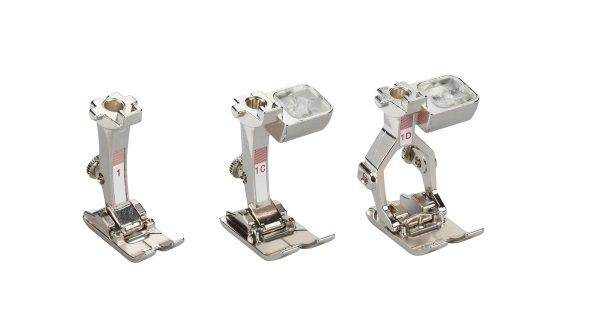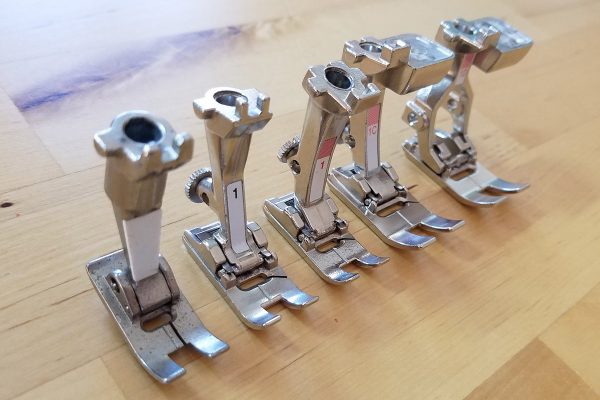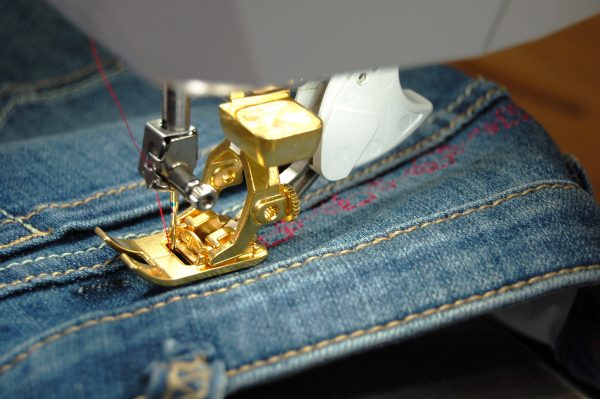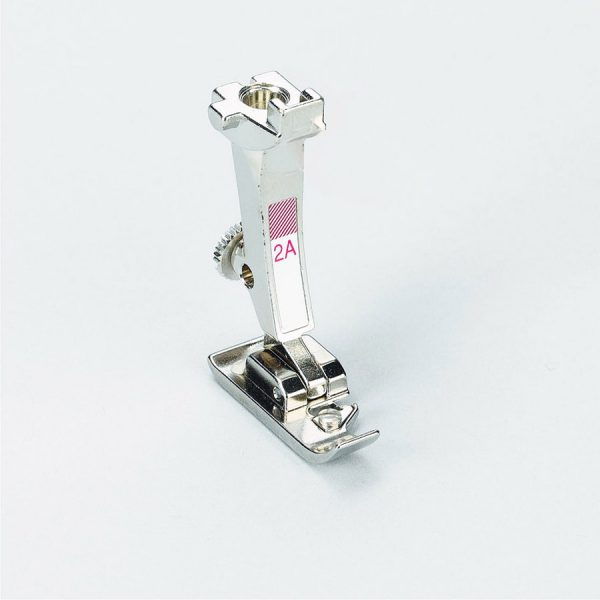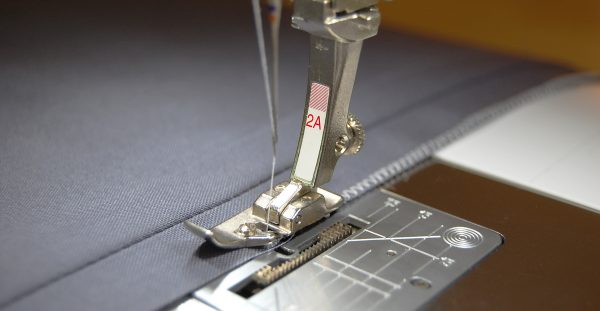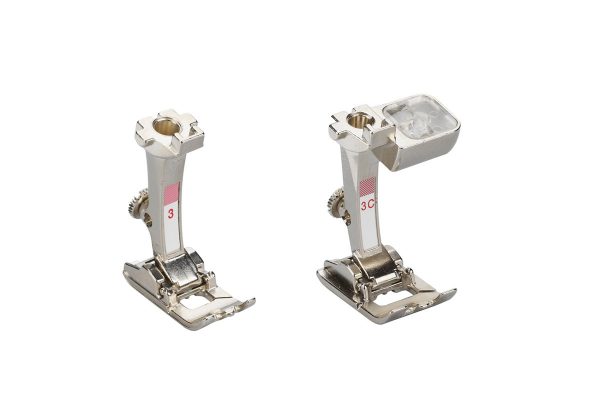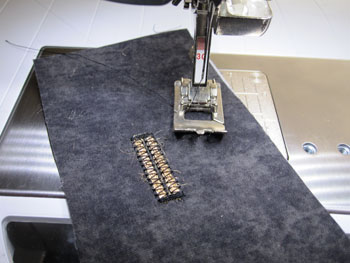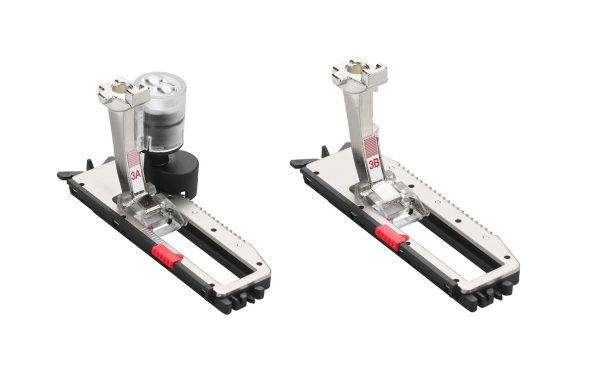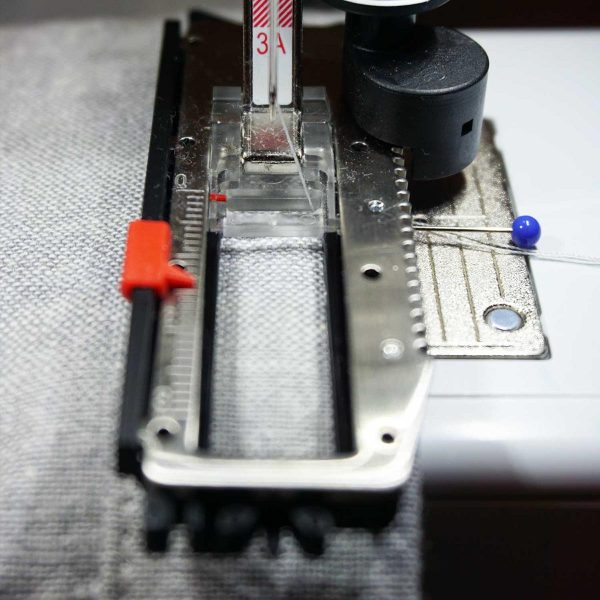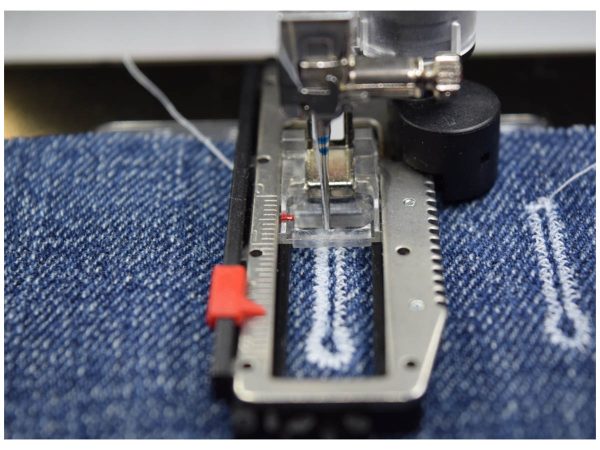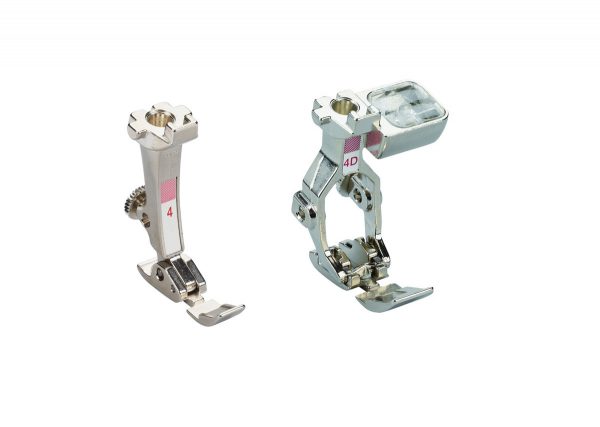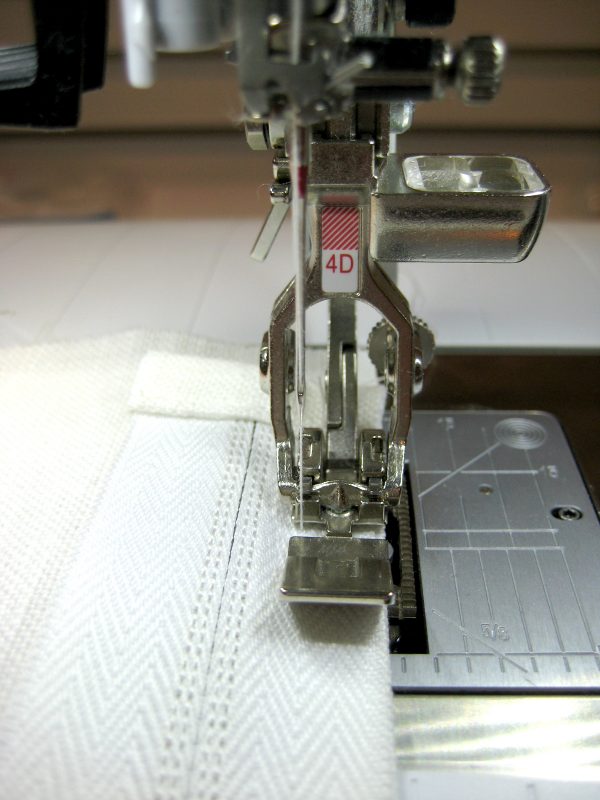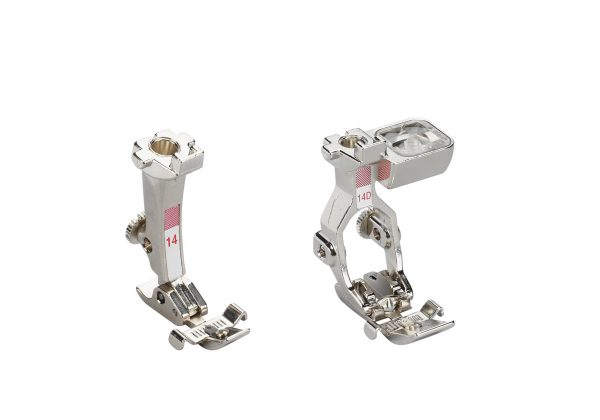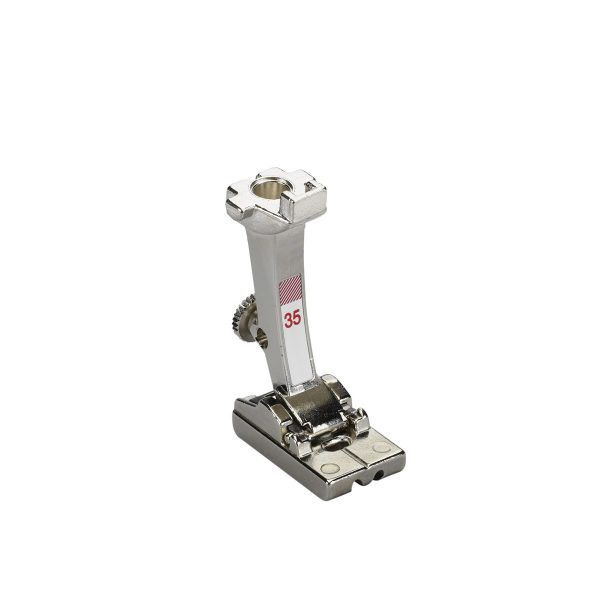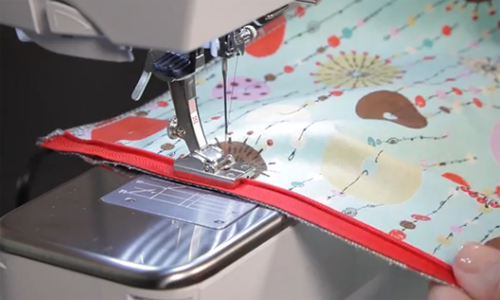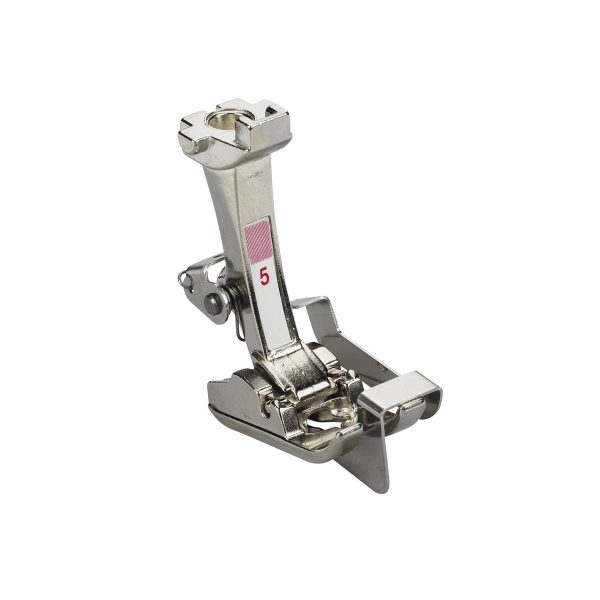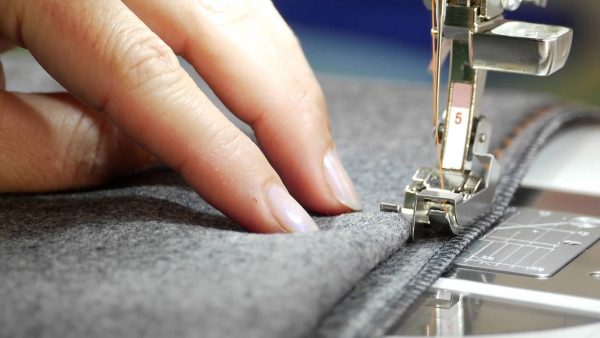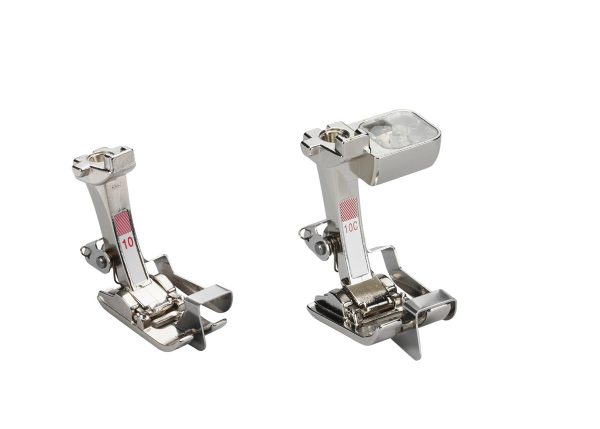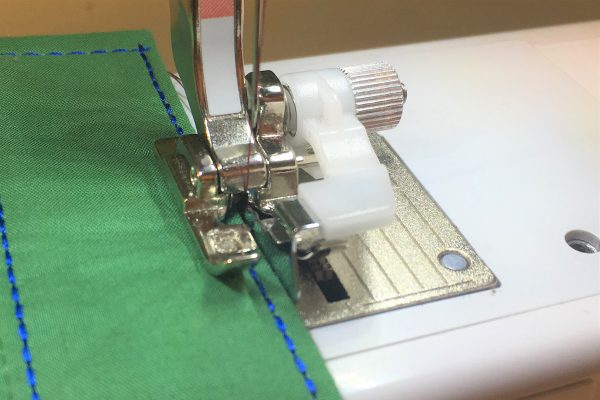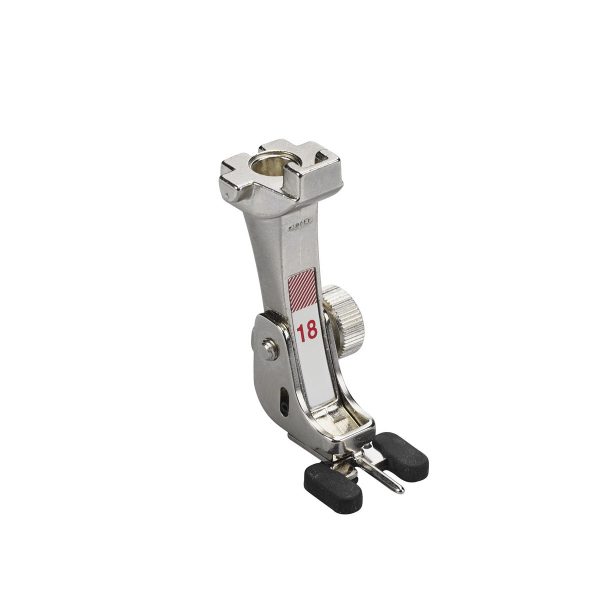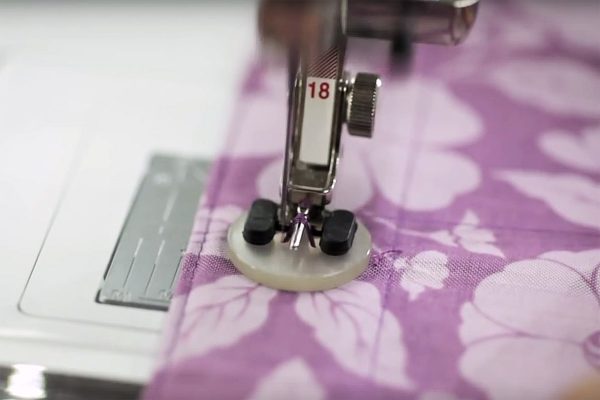Best Presser Feet for Garment Sewing
![]() WEALLSEW JUNE 29, 2018
WEALLSEW JUNE 29, 2018
BERNINA offers you a wide selection of over 100 presser feet and accessories that give free rein to your creativity. With the right precision foot it’s easy to finish your projects beautifully. Today we’re taking a closer look at the best presser feet for garment sewing. While there are many presser feet useful for sewing garments, we’re sharing the feet most used when creating beautifully sewn garments.
Reverse Pattern Foot #1/#1C/#1D
With cut-outs in front and back of the needle opening, reverse-pattern foot #1, #1C and #1D are ideally suited to sewing forward and reverse-feed stitches. It’s the perfect helper for multipurpose sewing (like switching back-and-forth between straight and zigzag stitches in the same project) and adding decorative stitches to your garment.
You can read about the history of this versatile foot in our BERNINA Feet Old and New post here.
See how easy this foot can make adding decorative stitches to any garment project in the Adding Decorative Stitches to Jeans post.
Overlock Foot #2/#2A
Overlock foot #2 and #2A are ideal for producing overcast seams and hems. It’s especially well suited for sewing a neat and tidy edge to simple seams. The stitches are formed over the pin on the inside edge of the foot, giving them an additional amount of thread. This prevents the fabric from bunching up and produces a flat, elastic seam.
Read about how to use the Overlock foot #2 and #2A to finish seams in the Seam Finishes 3 Ways tip post here.
The Buttonhole Feet
Buttonhole Foot #3/#3C
Buttonhole foot # and #3C are ideally suited to sewing manual buttonholes. Thanks to its practical grooves, these feet glide smoothly over the thread beads of the buttonhole, enabling particularly easy and precise sewing. The upper thread can be conveniently pulled to the back through the slot in the foot before you begin sewing. In this way, attractive buttonholes with and without cording can easily be sewn in the desired length.
Use the Buttonhole foot #3 or #3C when you need to make an over-sized buttonhole too large for the Buttonhole foot with slide #3A or #3B to handle. See a quick deomonstration of this technique in the Manual Buttonholes Tip here at WeAllSew.
Buttonhole Foot With Slide #3A/#3B
Buttonhole foot with slide #3A and #3B makes it a cinch to sew buttonholes of the same length. You can continue to sew as many buttonholes of the exact same length as you want, in next to no time. With Buttonhole foot with slide #3A, a sensor on the presser foot determines the size of the first buttonhole you sew and relays the dimensions to the sewing machine. This allows perfectly identical buttonholes to be sewn again and again, until the size is changed.
You can find a tutorial with tips for successful use of the Buttonhole foot with slide #3A in the Tips for Sewing Buttons by Machine post here.
This tip post will show you how to create a super strong keyhole type buttonhole using this foot. This type of buttonhole works well on heavy fabrics like denim, and creates a clean-looking finish to the buttonhole. Find the 4 Tips for Better Buttonholes post here.
The Zipper Feet
Zipper Foot #4/#4D
Zipper foot #4 and #4D makes quick work of inserting zippers neatly and precisely. The narrow, centrally placed toe allows Zipper foot #4 and #4D to get very close to the zipper coils, enabling it to attach the fabric securely. The result is a perfectly inserted zipper with a consistent stitch pattern.
Check out our Zipper Tips with Zipper Foot #4/#4D post for lots of information on inserting zippers with this specialized foot.
Zipper Foot With Guide #14/#14D
Zipper foot with guide #14 and #14D resembles standard Zipper foot #4, but features an added bar across the top of the foot which serves as a guide. Owing to its wavy shape, this adjustable guide rides right over the coils of the zipper. The result is a neat, evenly inserted zipper.
Invisible Zipper Foot #35
Invisible-zipper foot #35 is designed for inserting zippers invisibly into garment seams. In addition, this presser foot is a reliable helper when sewing home furnishings and accessories. Two diagonal grooves act as a guide, making zip insertion a breeze compared to the standard method. Located in the sole of the foot, the grooves easily accommodate the zipper coils, which are fed through at the same time as the zipper tape is guided under the foot and sewn.
Watch this video tutorial to see exactly how the Invisible zipper foot #35 helps create a perfect zipper closure for your project.
Blindstitch Foot #5
Blindstitch foot #5 is the invisible-hemming expert. When you sew a blind-hem with this foot, the stitching can barely be seen from the front. With Blindstitch foot #5 the stitch is formed over a special blade that acts as a guide, creating a slightly loose stitch so that the hem lies nice and flat. When the fabric is pressed flat, the needle-penetration points on the front of the fabric “close up”, making the seam virtually invisible. What’s more, the guide blade ensures an even distance to the folded edge, allowing the hem to be sewn neatly and consistently.
If you haven’t made a hem with the Blindstitch foot #5 before, read these Blind Hem Tips to help you get started.
Edgestitch Foot #10/#10C/#10D
Edgestitch foot #10, #10C and #10D are some of the most popular feet in the BERNINA collection! This foot is a practical help for sewing finished edges even and straight. Superbly suited to applying lace and trims or topstitching edges, pleats and hems. The guide blade in the center of the foot helps you sew seams and hems running perfectly parallel to the edge in next to no time.
Find out how the Edgestitch foot #10/#10C/#10D can help you create beautiful stitching elements on garment edges from Six Tips for Perfect Topstitching.
Button Sew-on Foot #18
Button sew-on foot #18 is an all-rounder for sewing on buttons, snap fasteners and eyelets. Its non-slip sole holds the button securely in place while it is sewn on. In addition, Button sew-on foot #18 has an adjustable middle toe, allowing you to vary the height of the thread shank according to fabric thickness. The middle toe can be flipped up and away when not in use.
Find tips for using the Button sew-on foot in the tip post 3 Ways to Sew a Button By Machine.
